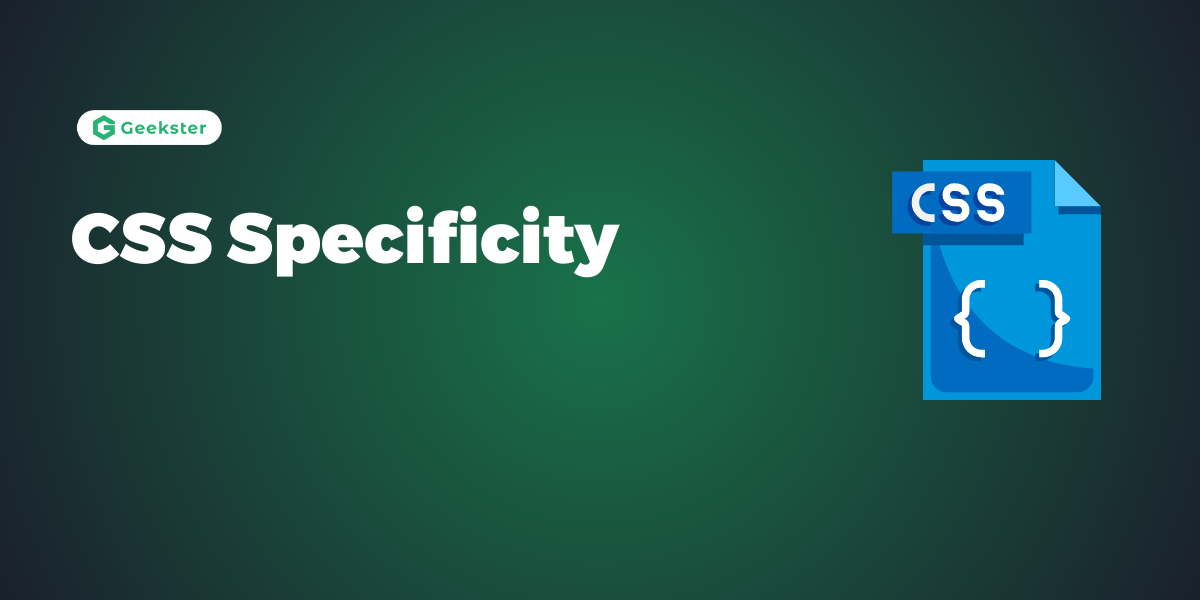Introduction
CSS specificity is a set of rules that determines which styles are applied to an HTML element when multiple conflicting CSS rules exist. It defines the priority or weight of CSS rules based on their selectors. Here are the key points about it:
Key Points About CSS Specificity
- Specificity Hierarchy:
- CSS specificity follows a hierarchy where certain selectors have more weight than others. In increasing order of specificity, the hierarchy is as follows: inline styles, IDs, classes and pseudo-classes, and elements and pseudo-elements.
- Calculating Specificity:
- We calculate specificity using a four-part notation called the specificity score.. The score consists of four values: the number of IDs, the number of classes and pseudo-classes, the number of elements and pseudo-elements, and the number of inline styles. The higher the score, the more specific the selector.
- Selector Types:
- Different types of selectors have different specificity values. For example, an ID selector has a higher specificity than a class selector, and a class selector has a higher specificity than an element selector.
- Resolving Conflicts:
- When multiple CSS rules target the same element with conflicting styles, the browser determines which style to apply based on specificity. The rule with the highest specificity score takes precedence and overrides conflicting styles from lower-specificity rules.
- !important Rule:
- The
!importantrule can be used to give a style declaration the highest specificity, overriding all other rules. However, you should limit its usage, as it can make CSS code difficult to maintain and debug.
- The
Example:-
In this example, we have used the “p” element as selector, and specified a red color for this element. The text will be red:
<!DOCTYPE html>
<html>
<head>
<style>
p {color: red;}
</style>
</head>
<body>
<p>Hello GeekSteer!</p>
</body>
</html>
If we have added the id selector (named “demo”). The id selector gives higher priority, making the text blue.
<!DOCTYPE html>
<html>
<head>
<style>
#demo {color: blue;}
.test {color: green;}
p {color: red;}
</style>
</head>
<body>
<p id="demo" class="test">Hello geekSter!</p>
</body>
</html>
If we have added an inline style for the “p” element. The inline style gives the highest priority, making the text pink.
<!DOCTYPE html>
<html>
<head>
<style>
#demo {color: blue;}
.test {color: green;}
p {color: red;}
</style>
</head>
<body>
<p id="demo" class="test" style="color: pink;">Hello World!</p>
</body>
</html>
output

Conclusion
It fundamentally governs how styles are applied to HTML elements in web development. By understanding It rules and best practices, developers can write more maintainable and predictable CSS code. Avoiding common mistakes related to specificity and employing effective strategies for resolving conflicts can lead to cleaner and more manageable stylesheets. Ultimately, mastering it contributes to creating efficient and professional-looking web designs that meet the needs of both developers and end users.
Frequently Asked Question
It is a set of rules that determines which styles apply to an HTML element when multiple conflicting CSS rules exist. It plays an important role in web development by ensuring that styles apply as intended and prevent conflicting rules from causing unexpected behavior.
To calculate it, count four types of selectors: the number of IDs, the number of classes and pseudo-classes, the number of elements and pseudo-elements, and the number of inline styles.. The higher the specificity score, the more specific the selector.
Common mistakes related to it include relying too heavily on !important declarations, which can lead to difficulty in managing and debugging styles. Another mistake is using overly complex or unnecessary selectors, which can increase specificity and cause unintended side effects.

